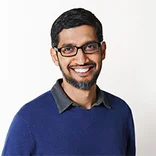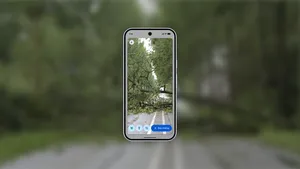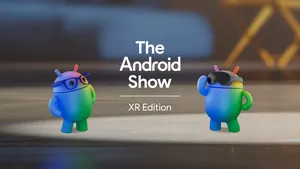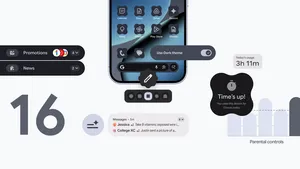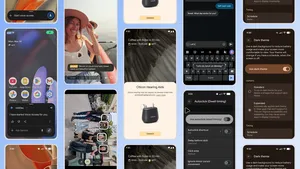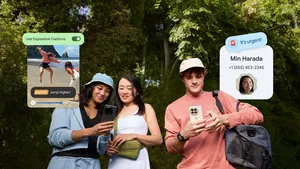Coming to a screen near you
This morning we welcomed 6,000 developers to our 7th annual Google I/O developer conference. The crowd in San Francisco was joined by millions more watching on the livestream and 597 I/O Extended events, in 90+ countries on six continents.
We’re meeting at an exciting time for Google, and for our developer community. There are now one billion of you around the world who use an Android device. One billion. We estimate that’s more than 20 billion text messages sent every day. 1.5 trillion steps taken with an Android. And more importantly, a roughly estimated 93M selfies.
Today, developers got a preview of our most ambitious Android release yet. With more than 5,000 new APIs (for non-techies, that stands for application programming interfaces) and a new, consistent design approach called material design, we’re continuing to evolve the Android platform so developers can bring to life even more beautiful, engaging mobile experiences.
But, beyond the mobile phone, many of us are increasingly surrounded by a range of screens throughout the day--at home, at work, in the car, or even on our wrist. So, we got to thinking: how do we invest more in our two popular, open platforms—Android and Chrome—to make it easier for you to easily and intuitively move from your phone, tablet, laptop to your TV, car or even your watch?
That question was answered for the I/O crowd today. Here are some highlights:
On the go: Android Wear and Android Auto
Most people check their phones more than 150 times a day. Often, it’s to read a text, look at a notification, or get some other simple piece of information. That’s a lot of time spent unlocking, swiping and entering passwords, when your hands could easily be free handling more important things.
Enter Android Wear, which extends Android, and its ecosystem of apps, to that most familiar spot for a “wearable,” your wrist. You get the information you need, quickly at a glance—just like you’re used to doing with your watch. Just say “Ok Google” to ask questions or to get stuff done. Get alerted when it's time to leave for dinner. Call a cab to take you there. See the traffic on the way. Text a friend once you're seated. It’s all right there, on your wrist, easy to see, right when you want it. Today we announced that two Android wearables, the LG G Watch and Samsung Gear Live, are available to order today on Google Play, and the Moto 360 from Motorola will be available in the coming months. Your thumbs will thank you.
It’s one thing to be able to simply check your wrist for what you need when you’re on the go. But what about when you’re in your car? Many of us want to stay connected even while driving. Getting directions, traffic updates, finding just the right music playlist. But using our phones while at the wheel is simply unsafe.
Android Auto, which we showed to developers today, takes care of that for you. Just connect your Android phone to a car with Android Auto, and you’ll have what you need at your fingertips such as turn-by-turn navigation from Google Maps, your curated playlists and radio stations through Play Music, simple-to-use voice search, and reminders from Google Now. This is accessible through your car’s controls, and more importantly, is far safer than fumbling around with your phone. You’ll start to see Android Auto in cars later this year.
In the living room: Chromecast and Android TV
So, you get out of your car, and now you’re home, after a long day, in front of the TV. Last summer, we launched Chromecast, a small, affordable device that lets you cast online video, music and anything from the web to your TV. It’s getting an update to make it even more powerful, and convenient to use, with new features like the ability to allow others to cast to your TV without needing to be on the same WiFi network, a customizable homescreen with personal photos or beautiful art, and casting exactly what is on your Android phone or tablet screen directly to the TV.
Now, in addition to Chromecast, Android TV brings all that you love about Android apps and games to your living room. Android is baked directly into your TV-watching experience, through a set-top box or as part of your TV. You can use voice search to find a live TV show, a good flick from Google Play, or a music video on YouTube. Plus, because it’s Android, you’ll be able to play your favorite Android games, reimagined for TV and with a gamepad. Android TV, which, like Chromecast, supports Google Cast technology, will ship with products from a range of consumer electronics companies later this year.
For the next billion: Android One
All these amazing multi-screen experiences are built around a smartphone and basic internet connectivity. However, there are many people—billions of people, in fact—who still don’t have access to a smartphone. We want to change that; so today we announced an important initiative called Android One.
We’re working with partners on a comprehensive solution—which includes hardware reference platforms—to address the mobile computing needs of those in emerging markets. Android One will provide smartphones that are high quality, affordable and come with reasonable data plans. Our partners will launch an initial range of sub-$100 Android One smartphones starting in India this Fall, with more countries to follow. We’ve long wondered what potential could be unleashed if people everywhere had access to the latest technology and the world's information. It's time to find out.
Design, Develop, Distribute
All in all, Android and Chrome are the platforms that make these experiences possible, but the products developers build upon them are what make it all come alive. Google I/O allows us to show them what we’re up to—whether it’s a new approach to design, new developer tools, or new ways to reach the next billion people who come online.
For all you developers out there, thanks for everything you do. We can’t wait to see what you build next.
